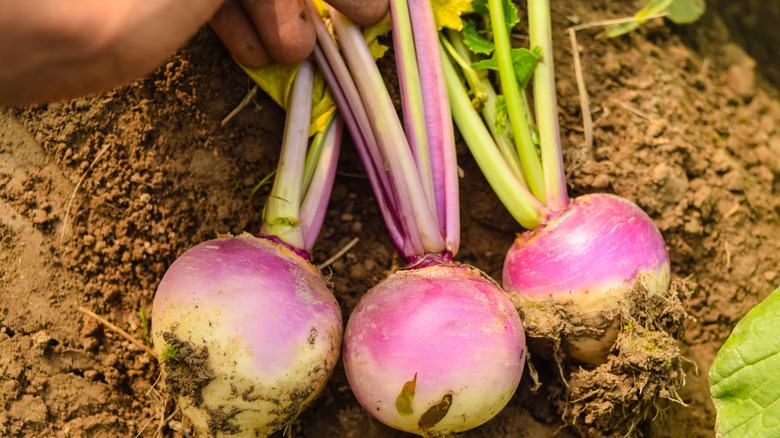
Many people struggle to include fruits and vegetables in their daily meals (if you’re curious, here’s the recommended daily intake of fruits and vegetables). Although these plant-based foods are nutrient-rich, they often challenge picky eaters.
Consider turnip greens as an example. A cup of cooked turnip greens is surprisingly nutritious, offering less than 60 calories and containing 4.87 grams of protein, 5.05 grams of fiber, 39.1 milligrams of magnesium, 209 milligrams of calcium, and 29.7 milligrams of vitamin C. Unfortunately, their strong bitterness can deter some from even finishing a bite.
The way you prepare turnip greens can significantly influence their nutritional benefits. Kathleen Benson, a registered dietitian-nutritionist at Top Nutrition Coaching, emphasizes the versatility of this underrated vegetable. “You can toss turnip greens into soups, or add them to a grain bowl with a tangy dressing to balance out the bitterness,” she suggests.
If you think making turnip greens more palatable is too much trouble, think again: Besides being nutrient-dense, turnip greens may help prevent cancer.
The health benefits of turnip greens

Turnip greens belong to the Brassicaceae (cabbage) family, making them cruciferous vegetables. Their health benefits are similar to those of other leafy greens.
They have notable cancer-fighting potential, primarily due to their glucosinolate content. These naturally occurring chemicals can interfere with cancer development processes, underscoring glucosinolates’ value for both prevention and treatment (as highlighted in a 2023 review in Medical Oncology). A 2009 review in Molecular Nutrition & Food Research noted that consuming these sulfur-containing, plant-based compounds can lower the risk of certain cancers.
Moreover, the calcium and magnesium in turnip greens support bone health and benefit the muscular, circulatory, and nervous systems. Eating cruciferous vegetables may reduce the risk of death from cardiovascular diseases, regardless of gender, as noted in a 2011 study in The American Journal of Clinical Nutrition.
Finally, the vitamin C in turnip greens boosts immune function, enhancing disease resistance and aiding in effective healing from injuries.
The best ways to prepare turnip greens

If you’re eager to enjoy the benefits of this underrated nutritional powerhouse but are unsure how to tackle its strong, bitter taste, don’t worry. Benson offers some delicious suggestions.
Besides using them in salads or soups, there are other ways to prepare turnip greens that enhance their flavor. She recommends starting with an acidic base like vinegar or lemon juice, which helps “cut the bitterness.” Another method is to chop some garlic and add it to the pan while sautéing the greens. You can also use olive oil (which offers unexpected health benefits) to cook them. Not only does cooking in fat enhance the taste, but it also makes the fat-soluble nutrients (e.g., vitamins A and K) more absorbable by your body.
While cooking turnip greens might reduce their vitamin C levels, there’s a simple solution: “Adding a squeeze of lemon at the end can brighten the flavor even more and also help preserve some of the vitamin C in the dish,” Benson advises.




